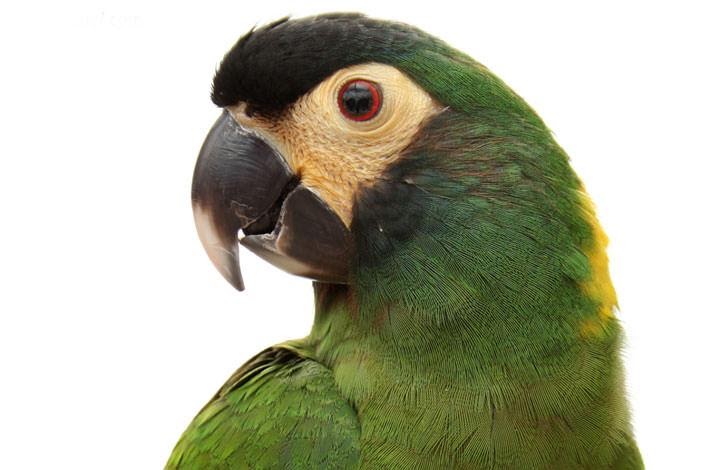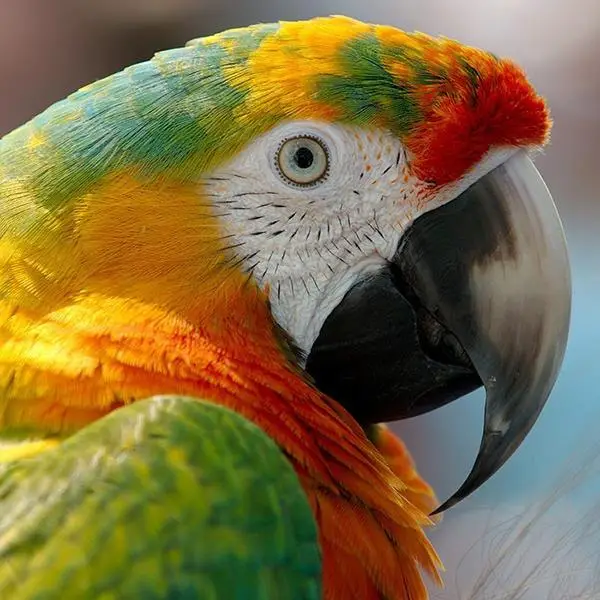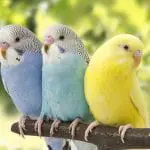One of the most important things to take note of when you are taking care of your pet parrot or of any pet bird for that matter is its overall health. When you are taking into consideration the parrot’s health, you are not simply looking at its immediate environment or providing it with a good and clean place to live in. Good and healthy food is essential when you want a healthy and happy parrot as well. However, looking at the parrot’s beak is also very important.
A parrot’s beak is not just simply for aesthetic purposes. There is a need for you to actually help the parrot in taking care of its beak as a healthy beak is also a sign of a healthy parrot. As such, you should know what constitutes healthy beak and how to help your parrot take care of its beak. After all, the parrot’s beak is one of the most important aspects of its overall survival.
Know how to spot a parrot with a healthy beak

Spotting a healthy beak is essential when it comes to knowing how to take care of your parrot’s beak. Here are some telltale signs of what makes a parrot’s beak healthy:
- Beaks that have a symmetrical shape and are also quite smooth to the touch are healthy beaks. The beak should have a slight downward curve so that it can easily open and close it whenever it wants to.
- The beaks should not scissor. What that means is that the upper and lower beaks should meet one another perfectly as one beak should not overlap the other. Scissor beaks can have long-term effects on your parrot’s health and can potentially cause it to weaken because of how it might find it difficult to eat.
- Healthy beaks should have the proper length. That means that they should neither be too long or too short.
How to spot an overgrown beak?

Similar to how you should know the signs of a healthy beak in parrots, you should also be able to know how to spot when the beak is unhealthy or overgrown. An overgrown parrot beak is when it is too long, as the term obviously suggests. When the beak is overgrown, it will be too difficult for the parrot to perform normal tasks such as eating and preening. Overgrown beaks usually manifest themselves in the parrot’s upper beak, but there is also a chance that the lower beak may also end up becoming overgrown as well.
When the top portion of the parrot’s beak begins to grow out of proportion in comparison to its lower beak, it will be too difficult for the parrot to be able to perform normal functions or even close or open its mouth. This will eventually lead to malnutrition or long-term health problems that you certainly want to avoid.
That said, overgrown beaks or beaks that do not look healthy are more than just aesthetics or cosmetics since there are plenty of negative effects caused by such an issue. Unhealthy beaks have a lot of direct effects on the parrot’s long-term health and will cause serious health problems if untreated right away. That is why it is important for you to know how to take care of the bird’s beak or know how to maintain it well enough using tools such as parrot toys.
The causes of overgrown beaks vary from case to case. There are times when the overgrown beak is caused by the parrot’s diet, such as when it is eating food that does not contain the right nutrients for its beak to grow normally. Sometimes, the overgrown beak can also be caused by a trauma or injury in the past or probably even an infection. But the common reason as to why the beak may end up overgrown is if the bird is not using its environment well enough.
How parrots avoid overgrown beaks

Naturally, parrots are actually good at making sure that their beaks do not grow out of proportion. They have several safety measures that allow them to keep their beaks in the right shape and size without the need for human intervention of any kind. However, this is usually common in wild parrots or other birds that live in the wild because they actually use their beaks more than their captive counterparts.
In the wild, parrots often use their beaks for a lot of different purposes and reasons, such as when they are remodeling their nest or when they are looking and foraging for food. The constant grinding and use that their beaks go through on a regular basis allow the parrots to maintain their beaks unconsciously. This is the natural way that they keep their beaks healthy and at the right size.
However, parrots kept in captivity do not often use their beaks other than whenever they are eating or are chewing their way through their cages. Aside from those, you won’t see many reasons why a captive parrot will use its beak. It does not have to use its beak to build a nest or to forage for food. As such, there is a larger risk that parrots born and raised in captivity will have overgrown beaks compared to their wild counterparts.
Use chew toys for beak maintenance
If you do not know how to make the parrot use its beak more often so that it won’t end up with an overgrown beak, then the answers to your problems are parrot chew toys. The market offers you plenty of parrot chew toys that will allow your pet bird to keep its beak well-maintained and at the right size so that it won’t have to suffer through life with an overgrown beak.
Parrots naturally love to peck and chew on anything they can find to try to maintain their beaks. However, if you have a parrot with nothing to peck or chew, it will end up with an overgrown beak. Toys are some of the best tools your parrots can use for pecking and chewing, as they were specifically made for such a purpose. However, always make sure that you go for parrot toys that were made to be safe for parrots to chew on. They should not contain any harmful chemicals or ingredients and should be hard enough to actually make your parrot try to work its beak out. Go for toys that are made with wood that is untreated because these are the ones that are not toxic for your bird’s overall health.
Give them hard food
Another good way for you to make sure that the bird’s beak stays as healthy as possible is to allow it to actually eat food that is quite hard compared to the usual pellets that they eat. Hard pellets can push your parrot to try to use its beak more just so it can break its food. As such, this helps your parrot when it comes to maintaining its own beak as the bird will be forced to use more effort when it is eating.
Aside from hard pellets, you can also use natural and healthy foods such as nuts or seeds because of how they are naturally hard enough to allow your parrot to exercise its beak.

